
Are you applying to the No Waste Challenge in Delhi?
In this brief summary, we dive deeper into local perspectives around waste, and highlight the specific challenges and opportunities facing this region.
Keep reading to learn more about submitting a project to the Delhi city track.
BEFORE YOU APPLY WE RECOMMEND YOU FIRST READ:
DELHI NOMINEES
DELHI BRIEF
INTRODUCTION
WASTE IS A BORROWED CONCEPT
To begin with, it’s important to note that Indian homes didn’t have a dustbin for the longest time — some still don’t. Most traditional households utilised everything, unfamiliar with the concept of ‘waste’. Even choosing to call it ‘waste’ brings in a bias – to view it as a problem to solve, rather than a resource.
Indian homes have long prioritized value for money by trying to ensure the durability and longevity of the material things they own. Indian families are also big on sharing — they will often pool funds and cycle resources within the community. For example, families would buy one large set of utensils to share, and simply borrow whenever one is hosting a gathering.
Repair skills have also been an essential component of this frugal culture. 20-30 years ago, every Indian household had a toolbox and a network of cobblers, tailors, and mechanics formed the backbone of a robust repair economy. But now, with hands-on repair skills considered more a vocation for the uneducated and with replacements becoming easier and cheaper, repair culture in Indian cities is steadily declining. Meanwhile, the landfills keep on growing.

CHALLENGES
MOUNTING WASTE
Though India has a long tradition of sustainable ways of living, the country’s fast-growing population is now facing major waste management issues. Delhi alone produces around 10,000 tonnes of garbage every day. A huge portion of this waste is being dumped in three overflowing landfill sites – Bhalswa, Okhla and Ghazipur — which exceeded their maximum capacities over a decade ago.
So far, the issue of waste has largely been addressed through a “mopping approach”. A lack of collective will and action makes it impossible to solve pressing issues at their core and instead channels efforts into superficial short-term fixes.
In 2016, the government came up with the new Solid Waste Management Rules (SWM). The rules encourage centralised treatment plans such as waste to energy, the present state of which is not robust in the country. All in all, there is a lack of emphasis on decentralised management of waste and the informal sector has been considerably neglected.

Insights on waste IN DELHI
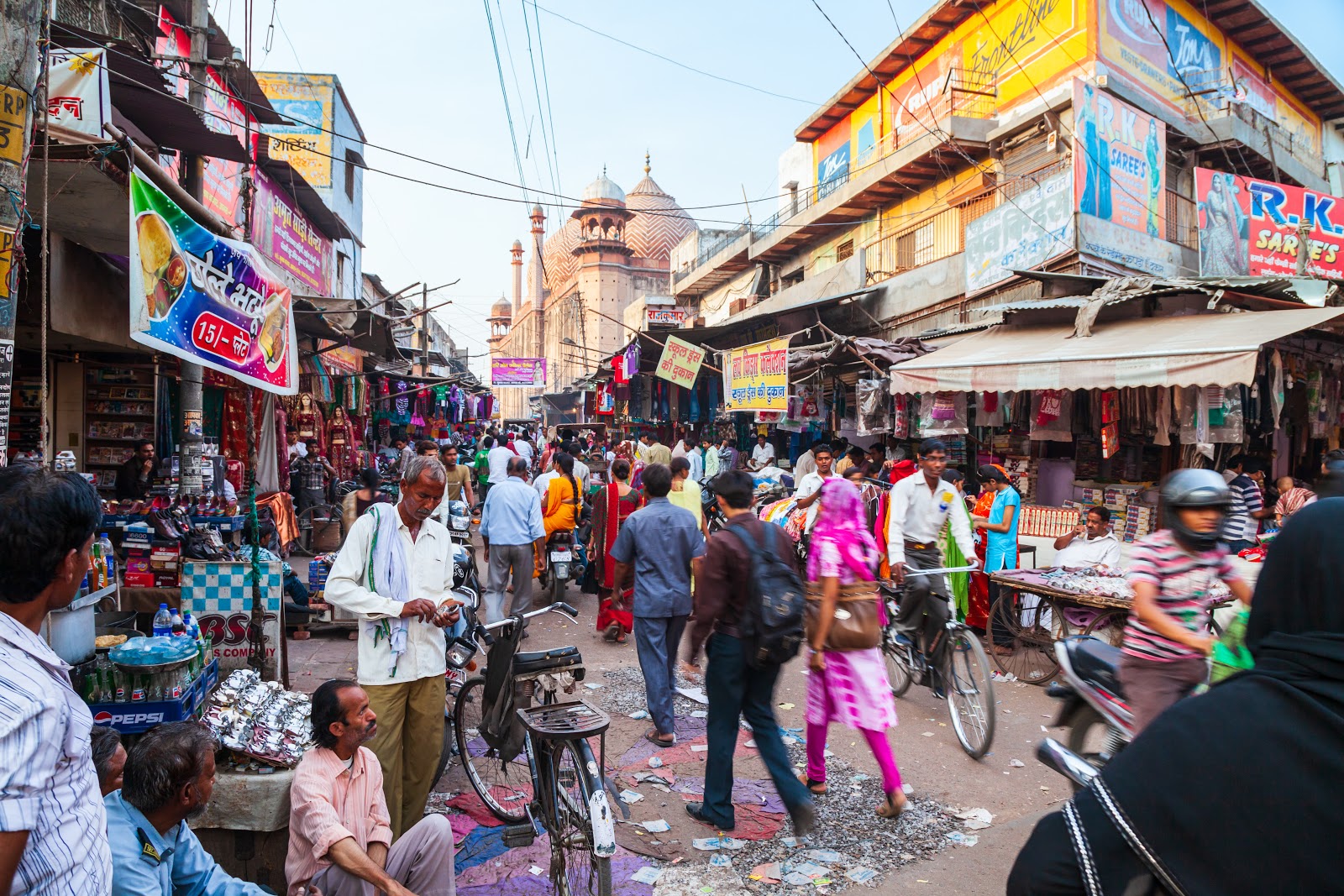
SHARE AND REPAIR
With the fast-moving lifestyle in the city, people have started to buy cheap products that can be used and thrown away easily. With this throw-away culture, people stopped associating values to their objects which leads to even more waste generation in the city.
In ancient times when appliances were not accessible for all, families in the neighbourhood would huddle around a shared television in the evenings or on Sundays — taking great care of the products to extend its life.
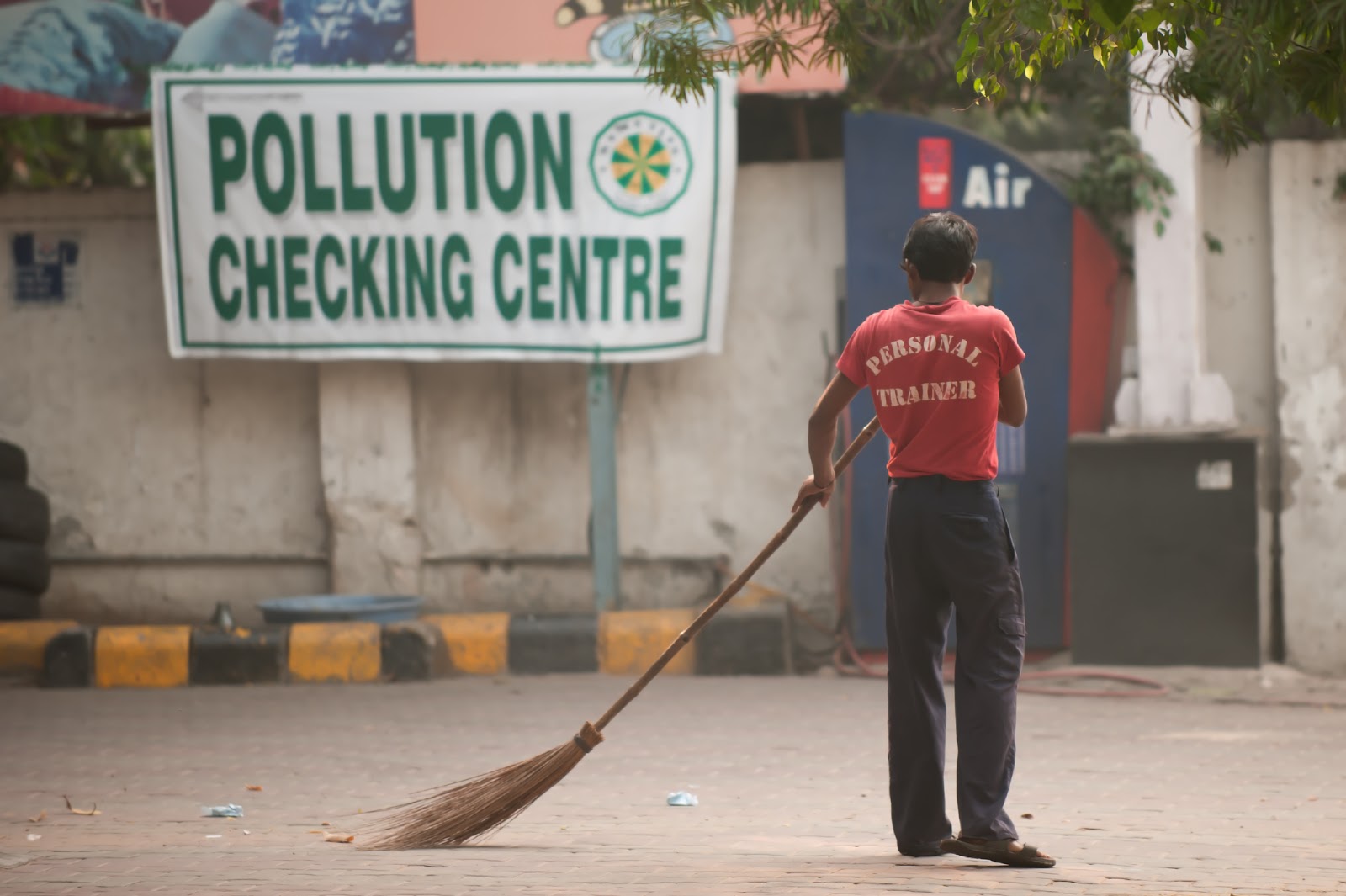
MASTER RECYCLERS
A man sweeps the parking lot of a Pollution Checking Centre in New Delhi, India. With incredibly cheap labour, India reaches recycling capacities beyond even the most progressive recycling nations in the West.
USE AND THROW-AWAY
Today, buying things is getting easier — cheaper commodities are just a click away on numerous e-commerce portals. At the same time, brands are manufacturing products which bank on a fast-consumption culture with a declining sense of durability and value for money.
India’s e-commerce packaging industry was worth US $32 billion in 2015 and is expected to grow rapidly to about US $73 billion by 2020. Flipkart, for instance, does around 8 million shipments every month. But at present, there is no law in India that regulates e-commerce packaging.
WHAT CAN DESIGN DO FOR DELHI?
So where can designers make a difference? With the help of our partners, we’ve highlighted some key opportunities and case studies relevant for Delhi, but there are plenty more! Refer to the global briefs for further inspiration.
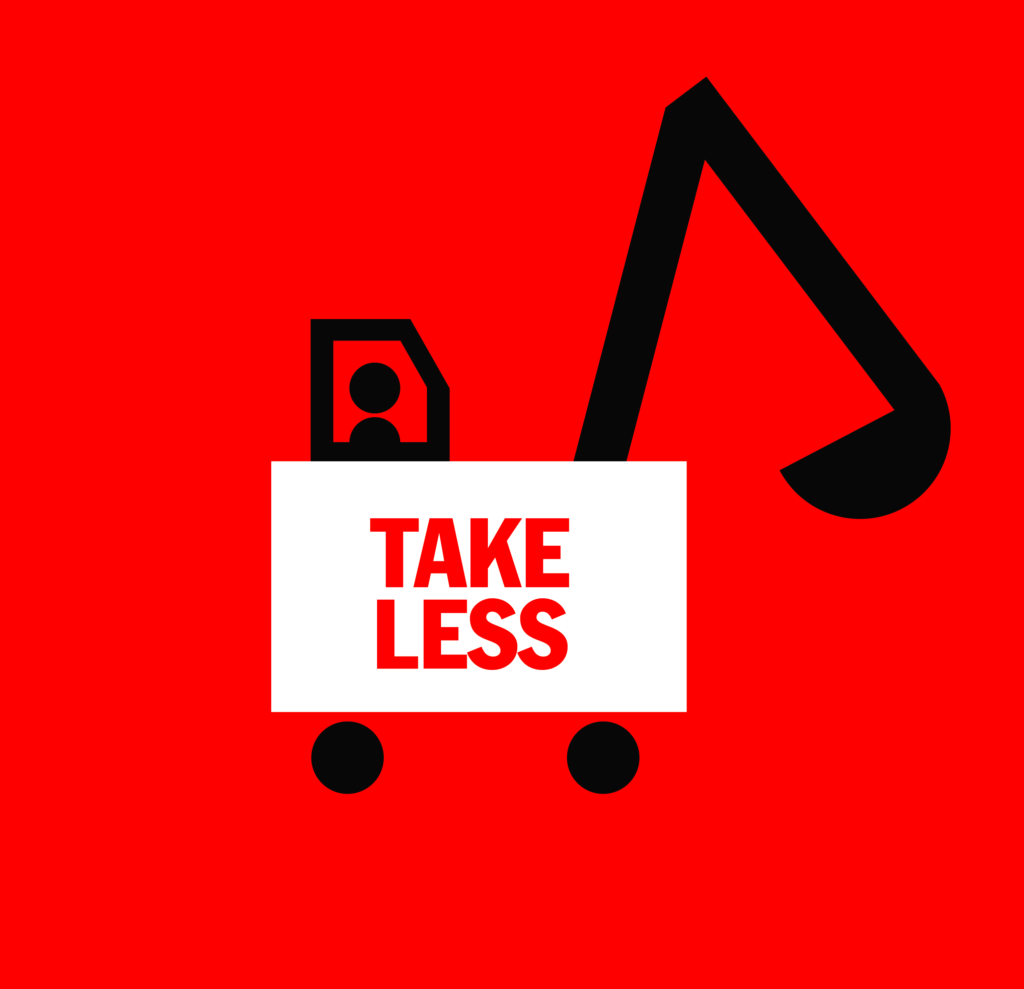
OPPORTUNITIES FOR DESIGN
This design brief asks: how can we use fewer natural resources and consume more mindfully? Take Delhi’s needs into account by considering the following opportunities.
- In the context of India’s booming throw-away culture, how can design inspire mindful consumption and bring back more lasting relationships with material objects?
- There is so much we can learn from our traditions. Yet, we tend to think of sustainability as a new-found concept. How can design instil pride in local traditions and systems that build on sustainable practices?
- Education is one of the most effective tools we have to promote sustainable living. How can design help educate India’s youth to embrace more circular values?
GET INSPIRED
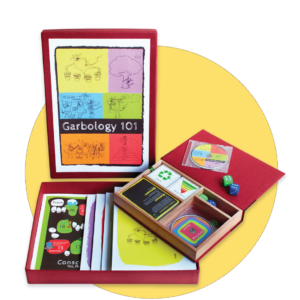
GARBOLOGY 101
WasteLess is an activity-based educational toolkit for children aged 6-12 years. It was developed by a team of interdisciplinary educators based in Auroville, South India, with the aim of spreading awareness on waste separation in a fun and interactive way.
The toolkit focuses on stimulating analysis, critical thinking and action — divided into themes like conscious consumerism, resource conservation and systems thinking — each providing a unique perspective on the generation and responsible management of waste.
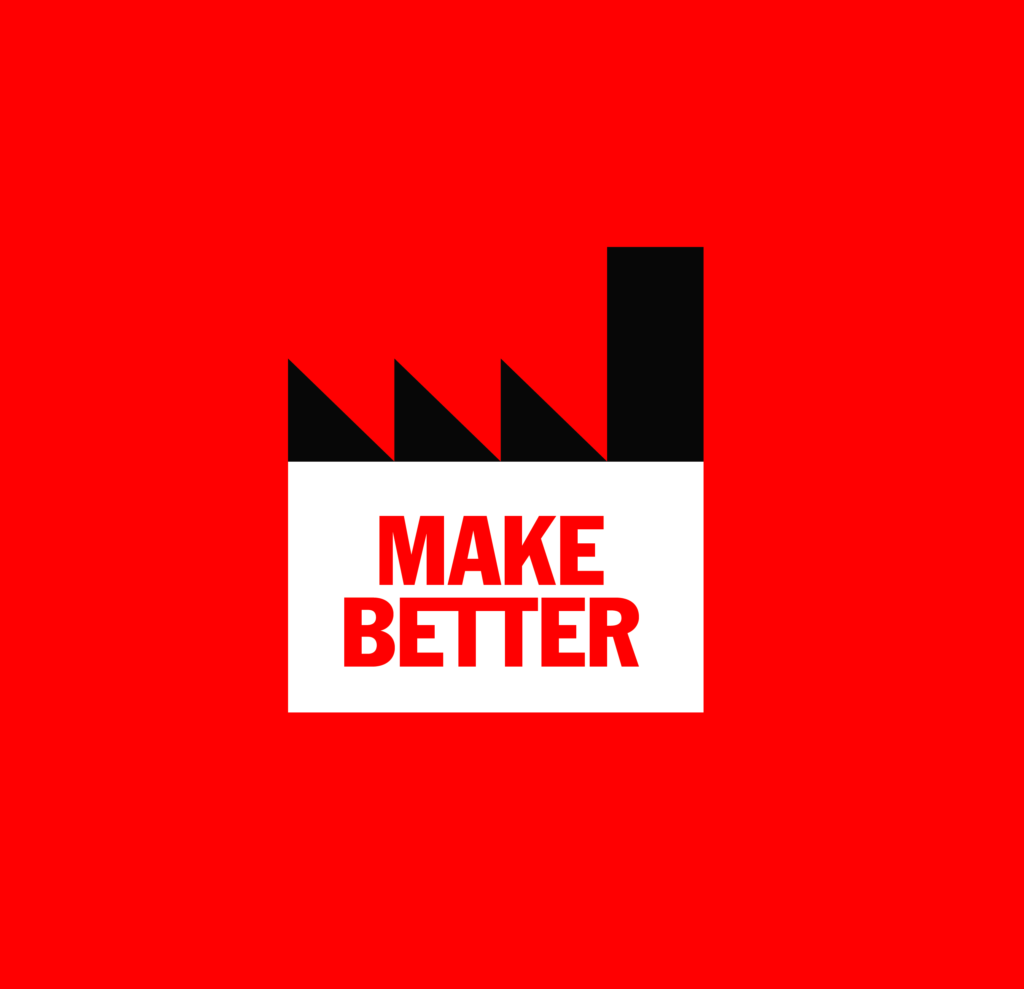
OPPORTUNITIES FOR DESIGN
This design brief asks: how can we make products and materials that are kept in use or regenerate natural systems? Take Delhi’s needs into account by considering the following opportunities.
- Learn from what does well in the Indian market. For example, products that are trusted by consumers are usually those that are easy to repair by local craftsmen. Can we take this to the next level? How can we promote the design of robust items that are made to last?
- Bear in mind that traditional forms of production in India can still be found within community settings with local materials and techniques. How can we revive these age-old skills of making and crafting?
GET INSPIRED

DIFFERNITURE
With her furniture brand Differniture designer Aakriti Kumar connects century old wood-working crafts with reclaimed wood. The wood that is used for her furniture pieces comes from old floorboards salvaged from dismantled container crates. Using ancient techniques with a modern approach, Differniture looks to revisit furniture making in India.

OPPORTUNITIES FOR DESIGN
This design brief asks: How can we use waste as a resource or dispose of goods more responsibly? Take Delhi’s needs into account by considering the following opportunities.
- In India, the informal sector already employs efficient collection and recycling processes, which have evolved through years of small-scale innovation. Instead of reinventing the wheel — how can design build on these informal innovations? Could we hack them, improve them, or scale them up?
- For many, recycling is often the only source of marginal income. Formalizing the informal sector could block many of these small-time operators from their livelihoods. Instead of disrupting these localized systems, how can design play a role in supporting them?
- Waste management is highly complex and it can be overwhelming as an individual to make sense of it all. How can design make information around waste segregation and treatment more accessible and actionable?
GET INSPIRED
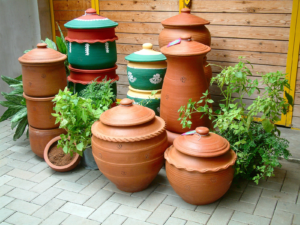
DAILY DUMP
Fifty-seven year old Poonam Bir Kasturi is a product designer; determined to explore alternatives to combat waste. This led her to design the khamba, a terracotta composter which helps homes compost their kitchen waste. Daily Dump was launched in 2006 — a design-driven home-composting label that is handcrafted by artisans from different small-scale industries.
Daily Dump’s products and services offer solutions for decentralised waste management in homes, communities, offices and public spaces in India.
REFERENCES AND FURTHER RESEARCH
To learn more, here are the main sources used for creating this briefing
-
Climate Movement in India
-
Consumerism
-
Production
-
Repair Ecosystems
-
Solid Waste Management in Delhi
-
Policy
-
Government notifies new solid waste management rules
-
Solid Waste Management Rules PDF (English version – page 51 onwards)
-
-
Informal Systems
-
WE ALSO WOULD LIKE TO THANK THE COLLABORATION OF THE FOLLOWING SPECIALISTS IN THE RESEARCH PHASE
Ishani Palandurkar, Chintan Environment Research and Action Group
Sahar Mansoor, Bare Necessities
Purna Sarkar and Himadri Das, Repair Cafe
Anuradha Govind, SWMRT
Smita Polite, Karo Sambhav
Aparna Pathak and Gaurav Shorey, 5waraj
Madhu Priyanka, Treemouse
Talluri Aishwarya, Independent Researcher
Deepanshu Gola, Architecture for Dialogue
Sonia Garga, Saahas Zero Waste
Jui and Deepti, PR Climate Studio
Swati Singh Sambhyal, UN Habitat
Delhi selection committee

Professor Nidhip Mehta is the former Dean of the School of Design at Pearl Academy, a practising architect for over twenty years, and a full-time educator in design and architecture since 2009. He currently works as a freelance academic consultant and visiting faculty at several design colleges throughout India. He believes in progressive, adaptive and value-based design education that focuses on the constantly changing student mindset while preparing students for wildly uncertain futures.

Tallulah D’Silva is an architect with a deep sensitivity for the environment. She specializes in cost effective and sustainable architecture. She is also deeply engaged in education and an ardent promoter of ‘outdoor learning’. She has been leading nature walks for almost a decade: through mangroves, jungles, beaches, wetlands, etc. She is involved in various initiatives such as the ‘Kids for Tigers’ project and the ‘Global Shapers’ community. She has powered several urban intervention initiatives such as the NoMoZo, Black Spot Fixes and now the ‘Travelling Dome’. She has also developed several ecological projects such as the EcoLoo and bio-remediation systems for water conservation. Tallulah has won several awards for her work and is an international speaker.

Himadri Das is an urbanist and educator based in Bangalore. His interest is in propagating awareness of sustainability be it through consultancy, advocacy or activism. Himadri is a trustee at Repair café Bengaluru. He is part of a team of volunteers who help spread the message of repairing and re-using domestic items by organizing pop-up workshops in communities. Himadri has been actively involved in teaching architecture and urban design for more than 10 years.

Abhijeet Khandagale’s work is multifarious in nature spanning inclusive innovation, space research, and entrepreneurship. Abhijeet found his passion to work on inclusive projects that use technology to improve lives. He ran two EdTech Startups, served as a fellow for Clean India Mission, and built a regional startup community of over 5000 people. Tying everything together, in 2018, he formed with his mentors the Vruksh Ecosystem Foundation, a non-profit focusing on building a culture of innovation, problem-solving, and entrepreneurship in underserved geographies to solve local problems and #BuildTheFuture. He also serves as the Impact Officer for the Global Shapers Nagpur Hub.

Pranshu Singhal is the Founder of Karo Sambhav, an organisation that enables producer brands to close material loops by collecting and recycling waste related to their products. It is developing socially responsible and financially viable circular solutions by collaborating with disintegrated players across waste value chains. It designs and implements transformative Extended Producer Responsibility programmes for electronics waste and plastic waste.

Pratap Raju has been in the climate and cleantech space since 2000. From being one of the pioneers in solar in the early days of National Solar Mission, he has since 2016 moved to supporting climate and cleantech startups throughout South Asia. As the founder of Climate Collective Foundation, he runs accelerators, funding platforms, educational courses in the climate tech startup space in India and across South Asia. A graduate from Harvard and then Oxford University, Pratap Raju has been an entrepreneur for the past 20 years in IT, media, renewable energy, and now climate.

Anuradha Govind is an active SWM practitioner working on various aspects of Solid Waste Management. Her activities include conducting training and awareness sessions for various stakeholders; creating content on various topics related to solid waste management; finding tech solutions to solve some waste management issues; mentoring other waste volunteers, community champions and students; working with the government to get better infrastructure and systems implemented on the ground. Anuradha is a member of Solid Waste Management Round Table (SWMRT) – a collective of SWM practitioners working in the area of solid waste management, since 2009.

Professor Tapan Chakravarty is an architectural Practician & Educator. He is an alumnus of the School of Planning & Architecture (Delhi) and Nottingham-Trent University (UK). Professionally engaged, since 1984, with a number of established firms in Delhi, and organizations like UNDP and INTACH; he also ran his own architecture consultancy practice. Academically engaged, since 1986, in various capacities and with a number of eminent Institutes in India; his academic career covers several aspects of Architecture & Design Education.

Siddharth Hande is a development sector specialist based in Chennai, India. He is a GIS expert, experienced in delivering high-quality data-driven research. He is the founder and current CEO of Kabadiwalla Connect, an award-winning social enterprise in the field of waste management. At Kabadiwalla Connect, his work focuses on developing scalable and inclusive solutions to the collection, aggregation and processing of post-consumer waste in cities in the developing world. He hopes to be able to articulate a cheaper and more inclusive approach for cities in the Global South to apply circular economy principles — by leveraging the informal waste ecosystem.

Toke Sabroe is an independent consultant who helps organisations design and run complex, multi-stakeholder sustainability projects and initiatives, in the intersection between technology, design and innovation. Over the last 20 years, he has led a broad variety of international innovation and development projects, working with organisations such as IKEA, Nike, eBay, NASA. He has worked with 100+ global innovators, and he is an advisor to Chennai-based Kabadiwalla Connect. Toke holds a MA in Information Science.

Pepijn Zurburg is a designer and art director. Together with Richard van der Laken he founded renowned visual design agency De Designpolitie, graphic design collective Gorilla, and What Design Can Do. Their work has won numerous awards, and features in the permanent collection of galleries such as Stedelijk Museum Amsterdam and MoMa New York. Pepijn is responsible for leadership and strategy, branding, and visual communication for everything What Design Can Do. Pepijn is serving the Delhi selection committee to represent What Design Can Do.













